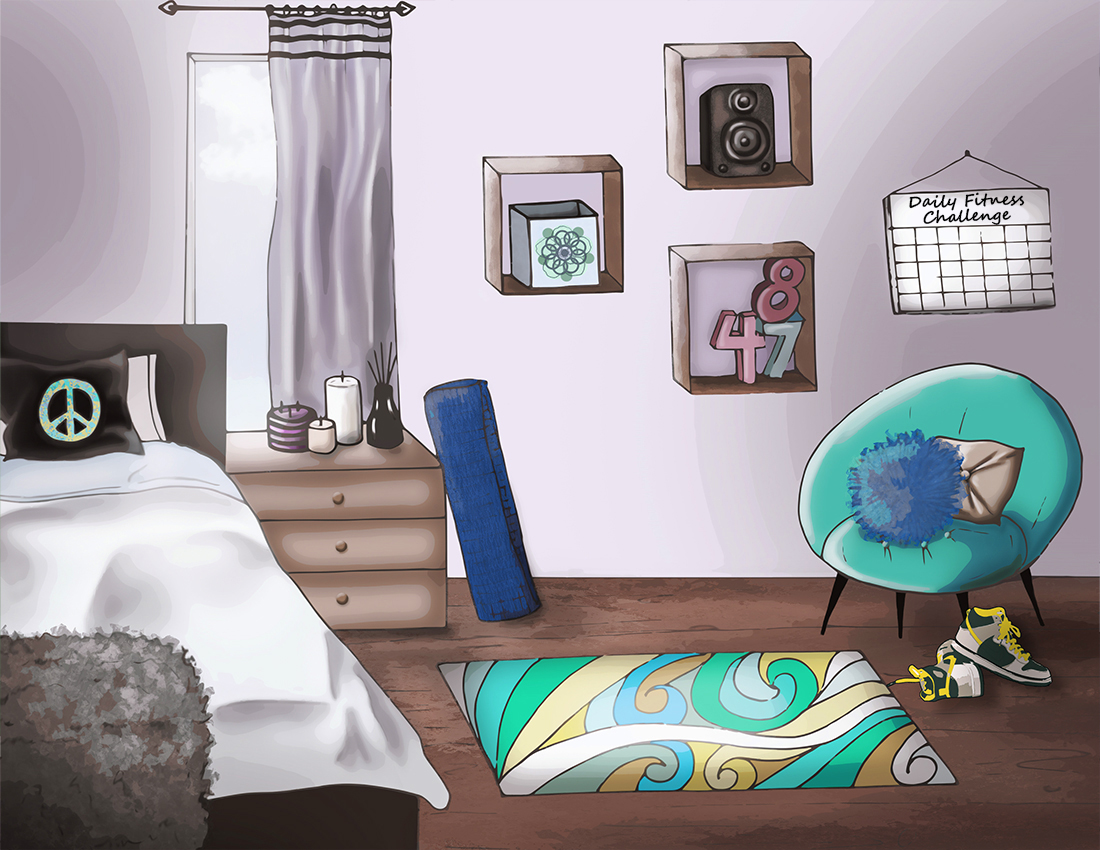We have come a long way since the “me too” movement began, but there’s still a tremendous amount of work that needs to be done in eliminating rape culture. The phrase may be familiar to you, or you may have no clue what it means. To give you some context, rape culture was coined by feminists in the 1970s and it was designed to show the ways in which society blamed victims of sexual assault and normalized sexual violence. It is a culture of having sympathy for the abuser, rather than the violated individual. This can mean making excuses for the perpetrator’s actions, questioning the survivor on what they were wearing at the time, or questioning if substances were involved. No one goes out expecting to be sexually violated. Yet, rape culture has instilled the idea that women must go through extra precautions to avoid being violated. It can be just as challenging for men to report an assault as they too face a scrutinizing amount of victim-blaming. Toxic masculinity is partly to blame here, as men are often shamed or encouraged to stay silent if they’ve been assaulted.
“All too often, when we see injustices, both great and small, we think, That’s terrible, but we do nothing. We say nothing. We let other people fight their own battles. We remain silent because silence is easier. Qui tacet consentire videtur is Latin for ‘Silence gives consent.’ When we say nothing, when we do nothing, we are consenting to these trespasses against us.”
Roxane Gay
So, essentially when someone uses the phrase “rape culture,” it involves victim-blaming, supporting the perpetrator, and not recognizing how huge and systemic an issue sexual violence really is. We see this happen a lot within the news. For example, when a young and academically successful person has been found guilty of sexual assault, they are often given a lighter sentence due to their “bright future.” Judges instead probe and grill survivors during court cases, which makes it incredibly difficult to come forward. The justice system is notorious for victim-blaming. Our society believes that only certain people can be rapists, which is far from the truth. There has been a failure to understand that just because someone appears “nice” doesn’t mean that they can’t assault someone. There are so many myths around how sexual assault works, which contributes to rape culture. For example, saying “yes” does not automatically mean someone wants to participate in any form of sexual activity. A “yes” said out of coercion is not consent.

For a more in-depth look at everyday examples of rape culture, this article shares some more insights.
To eliminate rape culture, we must become more self-aware of our own attitudes and biases surrounding it. It would be beneficial to self-reflect and understand why you may hold certain beliefs and educate yourself on improving and becoming more of an advocate in ending rape culture. In fact, reading this blog is already a start. You can also educate others, and if you see someone using derogatory language or jokes surrounding sexual assault, call them out and let them know why it’s wrong. In other cases, when talking to a friend who has been sexually assaulted, it’s important you support them and not excuse the abuser’s behaviour just because they seemed “nice.”
Remembering that the stereotypes for who can be a rapist are not always accurate. In reality, it can be someone you don’t expect. To end rape culture, our society must stop putting survivors in a pool of shame and guilt because they chose to do an extremely brave thing; coming forward and seeking justice.
For more information, these websites share some great ways we can eliminate rape culture:
Resources:
https://www.marshall.edu/wcenter/sexual-assault/rape-culture/
https://www.huffingtonpost.ca/entry/rape-culture-sex-assault_ca_5e6660f5c5b605572808dab0
Written by: Taryn
If you’re living in an abusive situation both your safety and your children’s safety is of utmost importance. We recognize that it’s not always simple to understand what to do next, and how you should go about dealing with this difficult situation. Living with abuse can create immense stress, and is something no one should have to face. While you want to leave, we realize that it’s not as easy as many imagine it to be. Your safety and well-being always comes first, which is why we’ve created a guide for safety planning for those living with abuse.
You should begin this process by having a plan in mind. This can include speaking with family, friends or a professional who can help support and assist you in the steps you need to take to break away. Ensure that there’s at least one person within your life that’s aware of the abuse. Gaining advice on your legal rights if there are children or property involved is also beneficial, or if you plan to get a restraining order and want to press charges against your abuser. If you don’t have a steady flow of income or home you can live in once leaving, it would be advised that you look into nearby shelters, as well as the financial aid within your local area. We recognize that it can be challenging to search these things on your cell phone or computer as your abuser may look through the search history. It’s recommended that you have a friend or family member make these searches, use a public computer or choose the times you do this research very carefully (i.e when your abuser isn’t home). Once you find the information you need, delete your search history, and keep private browsing on when making these searches. Below are links to legal, financial, and housing resources, as well as instructions on how to delete your search history.

Do your packing ahead of time and take whichever items are easiest for you to get. We know that your abuser may keep tabs on certain items, and understand that it can look suspicious if they notice things beginning to go missing. If possible, leave important items with a trusted friend or family member ahead of time, as your partner could find the bag where you’re hiding these things. If you have a pet, have a friend or family member take them temporarily in order for you to leave in a swift manner. Below are the items to take with you:

We hope this plan helps give you an idea of where to start during this process. Remember, the abuse is never your fault and you shouldn’t feel guilty for not leaving sooner. You will get through this.
Written by: Taryn
It can be a confusing process to notice signs of sexual abuse in a relationship. The lack of information and discussion around this topic is scarce, making many survivors feel isolated and ashamed to seek help. It can be upsetting to realize that your relationship is abusive and doesn’t make the process of leaving any more straightforward. We want you to know that there are resources available, and you deserve to be supported. Recognizing the signs is the first step, which is what we’re going to talk about.
A sexually abusive relationship can happen to anyone, regardless of gender and sexual orientation. Signs of this abuse can range from being forced to take oral contraceptives, or on the other hand, a partner refusing to wear protection. If STDs are knowingly and continuously transmitted, this is a form of sexual abuse and a serious crime. These examples all put your safety and emotional well-being at risk and often come with some form of coercion, manipulation, gaslighting, and in some cases, physical abuse if you choose to challenge the behaviours.
Other forms of sexual abuse in a relationship can mean coercing a partner to engage in sexual activities they are not comfortable doing and forcing them to add additional people to participate and watch. This person may retaliate with physical or emotional abuse if their partner says no. An abuser may also get their partner intoxicated, and in some cases, unconscious to have a greater chance of engaging in sexual behaviours. This is non-consensual and never okay. Your partner should never use substances with the intent of taking advantage and assaulting you.
Abusers have tactics that manipulate and gaslight their partners’ minds, making them believe that the abuse is their fault or not as bad as they imagine it to be (a significant reason why many survivors stay quiet). Abusers tarnish their partner’s self-esteem, making it appear even more dangerous to leave the relationship than stay. Some deny, or shower with gifts, act as though they changed until a new issue arises and what’s known as the cycle of abuse continues. It’s exhausting for survivors to endure and can sometimes take months, if not years, to recognize sexual abuse in their relationships.

If you suspect that you are in a sexually abusive relationship, leave as soon as you can. Abusive relationships will only get worse, even if your partner has apologized and promised that they will change. Vesta has two guides that can help you through the process of leaving while also ensuring your utmost safety. We have listed them here and here.
Talking to a professional can also be highly beneficial during this process. If you have access to a therapist, confide in them about what has taken place. We also wanted to include a free helpline that focuses on domestic violence and sexual abuse.
Resources:
National Domestic Violence Hotline
24-Hour Crisis Line
Written by: Taryn
There are plenty of ways to incorporate regular exercise and meditation into your routine, even from the comfort of your work or living space. One of the most common methods of improving physical health from home is through yoga, which comes in many styles and of varying levels of difficulty. Whether you’re a yoga beginner or have been taking classes for years, the benefits range from improving focus, balance and breathing to treating chronic pain.
If yoga isn’t of interest to you, there are a variety of other at-home means of improving your physical well-being, including breathing exercises, daily stretches, guided meditation, core exercises and more.
Our individually-themed rooms are designed to provide online mental health and healing resources through an interactive digital painting. Whether you’re looking to relieve tension, seek mental health advice, stimulate your mind, or even discover a new pastime, we have a room suited to your needs. Explore our room here, or download it for later. Enjoy exploring! (view the room guide here)

From left to right:
Artwork by Katie
Music therapy is the clinical use of music to accomplish individualized goals such as reducing stress, improving mood and self-expression. It’s an evidence-based therapy well-established in the health community. Music therapy experiences may include listening, singing, playing instruments, or composing music. According to the Cleveland Clinic, music therapy can help you psychologically, emotionally, physically, spiritually, cognitively and socially.
A short list of benefits includes:
Our individually-themed rooms are designed to provide online mental health and healing resources through an interactive digital painting. Whether you’re looking to relieve tension, seek mental health advice, stimulate your mind, or even discover a new pastime, we have a room suited to your needs. Explore our room here, or download it for later. Enjoy exploring! (view the room guide here)

From left to right:
Artwork by Rui
Mindfulness is the ability to be fully present, focused and cognizant of where we are and what we’re doing. When practiced on a daily basis, mindfulness is more readily attainable. Focus exercises have a variety of mental benefits, including reducing stress and negative thoughts, regulating emotions, regulating addictive behaviours, and calming the nervous system.
There are even some physical benefits to mindfulness and meditation, such as reducing blood pressure and treating insomnia. In this room, we provide a variety of calming interactive art, brain training games, and focus exercises to improve memory and mental agility.
Our individually-themed rooms are designed to provide online mental health and healing resources through an interactive digital painting. Whether you’re looking to relieve tension, seek mental health advice, stimulate your mind, or even discover a new pastime, we have a room suited to your needs. Explore our room here, or download it for later. Enjoy exploring! (view the room guide here)

From left to right:
Artwork by Katie
Consent is an ongoing process that involves voluntarily, actively agreeing and giving permission for sexual activity with partners to ensure everyone involved is comfortable, safe, on the same page and respectful of one another’s boundaries. It’s important to note that consent doesn’t have to be sexual. People should be learning about consent and the autonomy of their bodies from a young age, understanding that your body is yours, and you have the power of making choices for your body. Asking for consent starts as early as childhood. For example, “Can I give you a hug?”, “Would you like to talk about this?”, “Can I help you with that?.” However, for this piece, we will be focusing on sexual consent.
In movies, TV shows, and porn, it’s pretty common to see sexual interactions happen quickly; no lead-up and no communication. They seem to be missing those realistic aspects – the awkwardness, the laughter, the fumbling, the sweat, and lastly, consent. You may be thinking: “Well, I’ve been with my partner for ten years, we don’t need to ask for consent.”
or “Asking for consent is sort of a buzz kill.”
or “How the heck do I work consent into my sexual relationships?!”
Asking for consent doesn’t need to “ruin the mood.” Communication around consent can be fun, flirty, and empowering. Try getting comfortable asking questions, checking in and making it ongoing through your sexual experiences:

Someone not giving consent can look or sound a lot more than just “no.” It is common for people to refrain from using the phrase “no” out of fear of sounding blunt and receiving backlash from refusal. Instead, people may try a different phrase in the hope of softening the rejection. Remember, sexual activity without consent is sexual assault, which is a crime.
Verbally not consenting may sound like:
Non-verbal cues when not consenting may look like:
Other factors where consent cannot be freely given may look like:
“Note: Physiological responses like an erection, lubrication, arousal, or orgasm are involuntary, meaning your body might react one way even when you are not consenting to the activity. Sometimes perpetrators will use the fact that these physiological responses occur to maintain secrecy or minimize a survivor’s experience by using phrases such as, “You know you liked it.” In no way does a physiological response mean that you consented to what happened. If you have been sexually abused or assaulted, it is not your fault.” – RAINN
If you or someone you know has been sexually assaulted or is experiencing sexual violence, please reach out now:
Sources:
https://www.instagram.com/p/CPV43JfDMlv/
https://www.huffingtonpost.co.uk/amber-amour/35-sexy-ways-to-ask-for-consent_b_9789458.html
https://www.rainn.org/articles/what-is-consent
https://www.healthline.com/health/guide-to-consent#consent-under-the-influence
https://www.ted.com/talks/cheryl_bradshaw_how_consent_is_more_than_just_a_question_and_an_answer/up-next
Written by: Jaime
Regular self-care is something we often take for granted, and it’s not as complicated as it’s made out to be. You can find simple daily ways to tend to your physical and emotional health without it completely throwing off your schedule. Try exploring some of these resources when you have a moment in your day to just check in with yourself. These aren’t meant to be chores – in fact, the opposite.
Self-care is about taking some time just for yourself and for bettering your health. Taking a few minutes to step away and mediate, walk, or some breathing exercises can have a positive impact on your performance and overall well-being.
Our individually-themed rooms are designed to provide online mental health and healing resources through an interactive digital painting. Whether you’re looking to relieve tension, seek mental health advice, stimulate your mind, or even discover a new pastime, we have a room suited to your needs. Explore our room here, or download it for later. Enjoy exploring! (view the room guide here)

From left to right:
Artwork by Rui
Exposure to nature has both physical and psychological benefits. Whether you’re venturing out for a hike, doing some backyard yoga, or simply planting a mini garden on your porch, there are many ways to engage with the outdoors on a regular basis. The sounds and sights of nature have nurturing benefits, often being used for therapeutic purposes or to help aid sleep.
If you’re stuck indoors today, try listening to some ambient rain or ocean sounds as a calming method, or escape momentarily through nature videography.
Our individually-themed rooms are designed to provide online mental health and healing resources through an interactive digital painting. Whether you’re looking to relieve tension, seek mental health advice, stimulate your mind, or even discover a new pastime, we have a room suited to your needs. Explore our room here, or download it for later. Enjoy exploring! (view the room guide here)

From left to right:
Artwork by Katie
Let’s talk about dating apps. The popular platforms that help connect you with others whether you’re looking for that one special fish or want to explore the entire sea. Dating apps such as Hinge, Bumble, Tinder, Grindr, OkCupid, etc., are making dating even more accessible than ever before. Online dating may be different from old-fashioned ways or romanticized movies, with hopes of bumping into a stranger on the street, locking eyes, and falling in love. Now we can spend time from the comfort of literally anywhere, connecting and chatting with others with a simple swipe or tap of a button.
On the flip side, with the accessibility of dating apps, information sharing, and an enormous pool of users, there are added risk factors to everyone’s safety. So, we thought it would be helpful to remind everyone of some safe practices that you can keep in your back pocket, whether you’re using this information for yourself or passing it on to a friend or a family member who is embarking on the dating app journey.
You decide you’d like to put yourself out there, you’ve chosen to download a dating app, and you’re setting up your profile:


Dating is a huge part of our lives and dating apps allow us to connect with others that we probably would have never gotten the chance to meet. Dating is meant to be a fun and enjoyable experience, and following these tips is a great start for staying safe throughout your dating game. Remember, though, there is always a risk to your safety in online dating, and negative experiences can occur. If a negative experience happens to you or someone you know, please know it isn’t your fault, and we’re here to support you. Below is a list of resources available for support if you or anyone you know has encountered a negative, inappropriate or harmful experience with dating.
Resources:
RAIIN’s National Sexual Assault Hotline | 1-800-656-HOPE (4673)
Planned Parenthood | 1-800-230-7526
National Domestic Violence Hotline | 1-800-799-SAFE (7233) or 1-800-787-3224
National Sexual Violence Resource Center | 1-877-739-3895
Cyber Civil Rights Initiative | 1-844-878-2274
VictimConnect – Crime Victim Resource Center | 1-855-4VICTIM (855-484-2846)
Trans Lifeline | 1-877-330-6366
FBI Internet Crime Complaint Center
Sources:
https://policies.tinder.com/safety/intl/en
https://www.rainn.org/articles/online-dating-and-dating-app-safety-tips
https://www.instagram.com/p/CRPCMJQs6pv/?utm_medium=copy_link
https://www.cnet.com/pictures/best-dating-apps/6/
Written by: Jaime